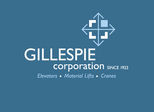- Glenn Siegel
- Jan 16, 2023
The jazz world has plenty of working bands, but only a few work hard enough and are talented enough to achieve true lift off. We saw one of them at the Community Music School of Springfield on January 6. Led by guitarist and composer Miles Okazaki, Trickster is a five-year-old ensemble that ranks among today’s finest. They made their western Massachusetts debut on Friday.
With three studio CDs and a soon to be released double live album, Trickster is the real thing: a band that can play impossibly complicated music with straightforward immediacy. Their set combined complex harmonies and counterpoint with a healthy dose of funk.
The band: Matt Mitchell, piano, Anthony Tidd, electric bass, Sean Rickman, drums and Okazaki on guitar, owes their sound to Steve Coleman. Coleman’s mid-1980s recordings on JMT, and his later work on RCA Novus, BMG, Label Bleu and Pi Recordings, are hugely influential and define the looping, free funk of the so-called M-Base movement. Tidd and Rickman have worked with Coleman since the late 1990s. I first met Okazaki when he appeared with Coleman at a Magic Triangle Jazz Series concert in 2012.
But Trickster’s sound covers more sonic territory. Unlike Coleman’s approach, which is compelling but can be unrelenting, Trickster’s repertoire includes pools of introspection and subdued tempos. Friday’s set even included a version of “Lush Life”, played first by Okazaki before the rest of the band joined in to taffy pull Billy Strayhorn’s beautiful composition. The night unfurled like a suite, with themes drawn from the band’s three Pi Recordings releases. The uninterrupted flow mirrored the format of their latest recording, Thisness, where they create grooves and themes that slowly transform over time.
“The borderlands are where the Trickster hangs out,” Okazaki wrote in the liner notes, “the undefined space where logic dissolves and creativity thrives. My hope was that the listener would enjoy the experience of passing through these boundaries of contrasting episodes.”
Guitar, piano, bass and drums are all rhythm section instruments, but Tidd and Rickman kept the pulse that provided the evenings through line. Tidd’s bass lines were thick and propulsive, sometimes subverting the groove with altered rhythms to produce a layered, disorienting effect. I was seeing him for the first time, and I wished for a Jazz Shares reception or another opportunity to chat with him. Born in London, Tidd came to the U.S. in 1997 and has toured all over the globe with Common, Greg Osby, Bhekki Mseleku, Rudresh Mahanthappa, and Ursula Rucker, while producing records for Jill Scott, Macy Gray, Zap Mama, Lady Gaga, Pink, The Black Eyed Peas and The Roots. He has a career composing scores for major film and television projects, most recently Jay Z’s Paramount/BET docuseries Rest in Power – The Trayvon Martin Story, and he has been a major teaching force in Philadelphia at Jazz Camp, the Kimmel Center and now at Ars Nova.
This was also my first chance to hear Rickman live. He cut quite the figure, exuding the cool demeanor of someone who grew up in the performing arts. His father is the legendary guitarist Phil Upchurch, and his mother, Renee Morris, sang the role of Mary Magdalene in Jesus Christ Superstar. His stick grip, which seemed out of the ordinary to me, was taught to him by an uncle, while another uncle was a dj who opened up his musical world. Like Tidd, Rickman has lots of experience with artists in the popular music world. Angela Bofill, Maxwell and Meshell Ndegeocello are all past employers of Rickman, who has also worked with Dapp Theory and spent four years with the fusion group Garaj Mahal. He often played in double-time, creating an energy that felt sped up, but not loud. His control was brilliant, and everything he played on the snare drum was special.
Meanwhile, Mitchell and Okazaki played impossibly fast unison lines, then completed each other’s thoughts with traded phrases. Mitchell is one of today’s premier pianists, someone with a ridiculous amount of technique and an equal measure of creative juice. He also records for Pi, producing five releases since 2013, including his latest, a six-CD box set, Snark Horse. Previous Jazz Shares appearances include dates with Anna Webber’s Simple Trio and Jon Iragabon’s Quartet. It’s time for him to lead a date in western Mass.
Okazaki’s last Valley appearance was a hypnotic, 2021 duo with drummer Dan Weiss. The guitarist has a light touch as a leader, directing the group through eye contact and by advancing thematic material on his guitar. Having responsive musicians helps. Although they hadn’t played together in a month, Trickster’s three-week June residency at Seeds in Brooklyn undoubtedly helped solidify their sound.
Speaking of sound, the Quartet marveled at the acoustics in the space. Because of the immense stone walls, they were dubious when they first arrived. But the halls walls are soapstone, not marble, and their porosity provided a warm, nuanced feel. The musicians, relaxed and accomplished, gave a marvelous performance.



























